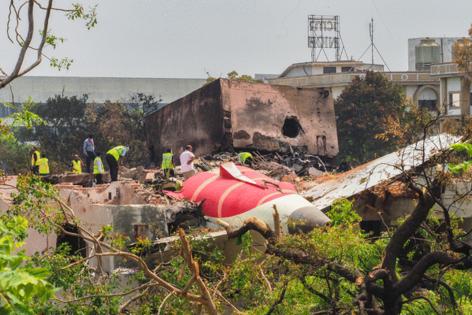787 switches at center of Air India crash probe were scrutinized before
Published in Business News
Boeing’s engine fuel control switches, now the center of the investigation into the fatal Air India crash in June, have been scrutinized before.
The Federal Aviation Administration warned in December 2018 that it had received reports that those switches, designed to shut down the aircraft’s engines, were installed with the locking feature disengaged. Without the lock it would be easier for pilots to accidentally move the switches and inadvertently cut power to the engines.
The FAA determined that the reports did not pose a safety risk and recommended airlines inspect the locking feature on the engine fuel control switches, but did not require those inspections.
That service bulletin drew focus Friday when accident investigators released a preliminary report about the fatal crash of an Air India Boeing 787 in June. The Everett-built plane crashed less than a minute after takeoff in the northwestern Indian city of Ahmedabad, killing 241 of the 242 people on board and 19 people on the ground.
The preliminary report indicated that the investigation has not revealed concerns with Boeing’s 787 or its engines, from manufacturer General Electric. “At this stage of the investigation, there are no recommended actions” for the 787 or GEnx engines, the report said.
Also on Friday, the FAA issued a “continued airworthiness notification” reiterating that the 2018 reports about the engine fuel control switches’ locking feature did not pose a safety risk.
Boeing deferred questions about the engine fuel control switches and the earlier bulletin to the FAA.
“Our thoughts remain with the loved ones of the passengers and crew on board Air India Flight 171, as well as everyone affected on the ground in Ahmedabad,” Boeing said in a statement Friday. “We continue to support the investigation and our customer.”
Shortly after takeoff, the Air India 787 seemingly failed to gain thrust, leading aviation experts to speculate that both engines had failed but unsure how that could have happened.
A dual engine failure is extremely rare because the engines are designed to operate independently, adding a layer of redundancy to keep the plane flying even if there is a problem with one engine. Most planes, including the 787, can safely fly with just one engine.
On Friday, investigators said that the two engine fuel control switches had moved from “run” to “cutoff” within a second of one another.
That cut fuel to both engines, potentially explaining the loss of thrust, but leaving it unclear why or how the switches had moved.
On the cockpit voice recorder, one pilot can be heard asking the other why he had cut fuel to the engines. The other pilot responded that he had not done so.
The switches were then moved back to “run,” but the engines could not restart and regain thrust quickly enough to avoid the crash.
Aviation safety experts who spoke with The Seattle Times before the preliminary report’s release said it’s difficult for pilots to accidentally flip the engine fuel control switches. In order to move them, pilots have to pull the switch up and over, a two-step process designed to avoid an error.
The experts also said pilots would never be trained to pull both switches at once while in flight.
In the report, investigators said Air India had not inspected the engine fuel control switches on its Boeing planes after the FAA’s 2018 notice regarding the locking feature because the bulletin was “advisory and not mandatory.”
Air India replaced the throttle control module, including the engine fuel control switches, on the aircraft involved in the accident in 2019 and 2023 for reasons unrelated to the locking feature.
©2025 The Seattle Times. Visit seattletimes.com. Distributed by Tribune Content Agency, LLC.












Comments